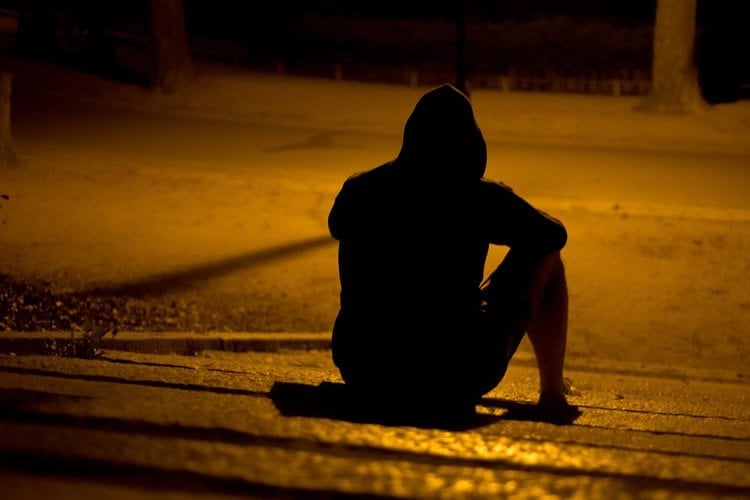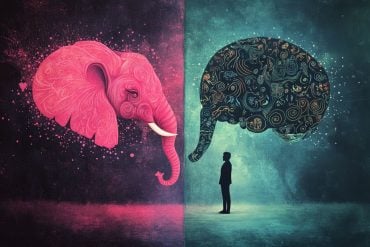Summary: A new study reveals an increase in depression diagnosis in Denmark following the transition from Daylight Savings time to standard time.
Source: Aarhus University.
The number of people diagnosed with depression at psychiatric hospitals increases immediately after the transition from daylight saving time to standard time — this is the conclusion of a recent register-based study from Denmark.
“The year has 16 months: November, December, January, February, March, April, May, June, July, August, September, October, November, November, November, November,” writes the Danish poet Henrik Nordbrandt in a disheartening comment on the month we are about to enter.
And Nordbrandt is not the only one suffering in November. A recently published study documents that the number of people who are diagnosed with depression at psychiatric hospitals in Denmark increases immediately after the transition from daylight saving time to standard time. More specifically, the number of depression diagnoses during the month after the transition from daylight saving time is approximately eight per cent higher than expected based on the development in the number of diagnoses up to the transition.
The study is based on analysis of 185,419 depression diagnoses registered in The Central Psychiatric Research Register between 1995 and 2012.
According to Associate Professor Søren D. Østergaard from Aarhus University Hospital in Risskov, which is part of The Department of Clinical Medicine at Aarhus University, the increase in depression rates is too pronounced to be coincidental.
Søren D. Østergaard is one of the five researchers behind the study, which is the result of a collaboration between departments of psychiatry and political science at the universities of Aarhus, Copenhagen and Stanford.
“We are relatively certain that it is the transition from daylight saving time to standard time that causes the increase in the number of depression diagnoses and not, for example, the change in the length of the day or bad weather. In fact, we take these phenomena into account in our analyses,” says Søren D. Østergaard.
He also points out that even though the study is based on analysis of relatively severe depressions diagnosed at psychiatric hospitals, there is no reason to believe that the time transition only affects the propensity to develop more severe forms of depression.
“We expect that the entire spectrum of severity is affected by the transition from daylight saving time to standard time, and since depression is a highly prevalent illness, an increase of eight per cent corresponds to many cases”, says Søren D. Østergaard.
The study does not identify the underlying mechanism triggering the marked increase, but the researchers point to some possible causes. In Denmark, the transition from daylight saving time to standard time ‘moves’ one hour of daylight from the afternoon between 5:00 pm – 6:00 pm to the morning between 7:00 am – 8:00 am.
“We probably benefit less from the daylight in the morning between seven and eight, because many of us are either in the shower, eating breakfast or sitting in a car or bus on the way to work or school. When we get home and have spare time in the afternoon, it is already dark,” explains Søren D. Østergaard.

“Furthermore, the transition to standard time is likely to be associated with a negative psychological effect as it very clearly marks the coming of a period of long, dark and cold days,” says Søren D. Østergaard.
Why are the results of the study important? The researcher from Aarhus University is not in doubt.
“Our results should give rise to increased awareness of depression in the weeks following the transition to standard time. This is especially true for people with a tendency towards depression – as well as their relatives. Furthermore the healthcare professionals who diagnose and treat depression should also take our results into consideration,” says Søren D. Østergaard.
Source: Søren Dinesen Østergaard – Aarhus University
Image Source: NeuroscienceNews.com image is in the public domain.
Original Research: Abstract for “Daylight savings time transitions and the incidence rate of unipolar depressive episodes” by Hansen, Bertel T.; Sønderskov, Kim M.; Hageman, Ida; Dinesen, Peter T.; and Østergaard, Søren D. in Epidemiology. Published online October 20 2016 doi:10.1097/EDE.0000000000000580
[cbtabs][cbtab title=”MLA”]Aarhus University “Transition From Daylight Saving Time To Standard Time Leads To Depressions.” NeuroscienceNews. NeuroscienceNews, 29 October 2016.
<https://neurosciencenews.com/depression-time-change-5384/>.[/cbtab][cbtab title=”APA”]Aarhus University (2016, October 29). Transition From Daylight Saving Time To Standard Time Leads To Depressions. NeuroscienceNew. Retrieved October 29, 2016 from https://neurosciencenews.com/depression-time-change-5384/[/cbtab][cbtab title=”Chicago”]Aarhus University “Transition From Daylight Saving Time To Standard Time Leads To Depressions.” https://neurosciencenews.com/depression-time-change-5384/ (accessed October 29, 2016).[/cbtab][/cbtabs]
Abstract
Gut dysbiosis impairs recovery after spinal cord injury
BACKGROUND: Daylight savings time transitions affect approximately 1.6 billion people worldwide. Prior studies have documented associations between daylight savings time transitions and adverse health outcomes, but it remains unknown whether they also cause an increase in the incidence rate of depressive episodes. This seems likely because daylight savings time transitions affect circadian rhythms, which are implicated in the etiology of depressive disorder. Therefore, we investigated the effects of daylight savings time transitions on the incidence rate of unipolar depressive episodes.
METHODS: Using time series intervention analysis of nationwide data from the Danish Psychiatric Central Research Register from 1995 to 2012 we compared the observed trend in the incidence rate of hospital contacts for unipolar depressive episodes after the transitions to and from summer time to the predicted trend in the incidence rate.
RESULTS: The analyses were based on 185.419 hospital contacts for unipolar depression and showed that the transition from summer time to standard time were associated with an 11% increase (95% CI: 7%, 15%) in the incidence rate of unipolar depressive episodes that dissipated over approximately 10 weeks. The transition from standard time to summer time was not associated with a parallel change in the incidence rate of unipolar depressive episodes.
CONCLUSION: This study shows that the transition from summer time to standard time was associated with an increase in the incidence rate of unipolar depressive episodes. Distress associated with the sudden advancement of sunset, marking the coming of a long period of short days, may explain this finding.
“Daylight savings time transitions and the incidence rate of unipolar depressive episodes” by Hansen, Bertel T.; Sønderskov, Kim M.; Hageman, Ida; Dinesen, Peter T.; and Østergaard, Søren D. in Epidemiology. Published online October 20 2016 doi:10.1097/EDE.0000000000000580






